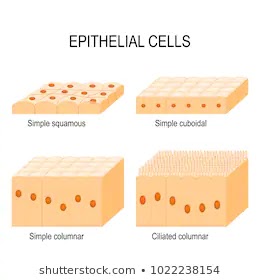Connective tissue Connnective tissue: Consisting of ground substance and fibres,in which various connective tissue cells are inserted. Function Connective tissue supports organs and cells,helps in exchange of nutrients and wastes between the blood and tissue,protects against microorganism, repair damaged tissue and stores fat. Extracellular matrix The extracellular Matrix helps in the transfer of nutrients and waste material between cells of connective tissue and the bloodstream. Ground substance Ground substance is a colourless, gel-like substance in which the cells and fibres of connective tissue are inserted. it is a complex mixture of glycosaminoglycans, proteoglycans and glycoproteins . Ground substance assist as a lubricant,helps to avoid invasion of tissue by foreign agents, and withstand un the effect of forces ocompression. Fibres collagen,reticular and Elastic are long, slender protein Polymers present in different parts in different ...





